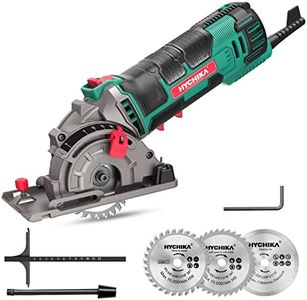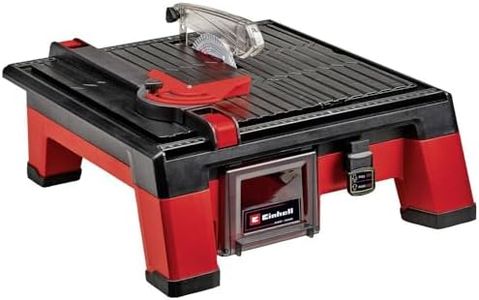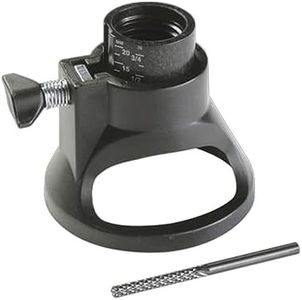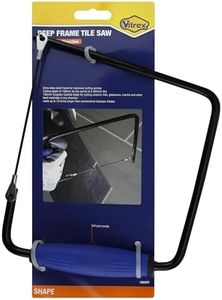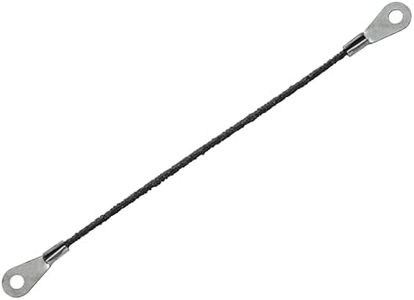We Use CookiesWe use cookies to enhance the security, performance,
functionality and for analytical and promotional activities. By continuing to browse this site you
are agreeing to our privacy policy
10 Best Tile Saws
From leading brands and best sellers available on the web.By clicking on a link to a third party's website, log data is shared with that third party.
Buying Guide for the Best Tile Saws
Choosing the right tile saw can make your tiling project easier, more efficient, and produce better results. It’s important to understand the different features and specifications, as well as how they fit your needs depending on the type of tile, size of the job, and your experience level. By evaluating these key aspects, you’ll be in a strong position to pick a tool that’s comfortable to use, delivers accurate cuts, and withstands repeated usage.Blade SizeThe blade size refers to the diameter of the cutting blade on the tile saw. Common sizes are 4-inch, 7-inch, and 10-inch blades. Larger blades can handle thicker and bigger tiles, while smaller blades are easier to control and ideal for more detailed or light work. If you plan to cut large format tiles or thicker materials like stone, a bigger blade (such as 10-inch) is more suitable. If your projects involve smaller tiles or you want a more compact saw, a smaller blade size is easier to manage.
Cutting CapacityCutting capacity tells you the maximum tile size the saw can cut, both in straight cuts (rip capacity) and diagonal cuts. This spec is important because it directly affects what size tiles you can work with. Entry-level saws might handle up to 12-inch tiles, while more advanced models can go beyond 24 inches. If you often work with large format tiles, look for a saw with higher cutting capacity; for smaller home projects, a lower capacity is usually sufficient.
Type of Saw (Wet vs. Dry)Tile saws generally fall into wet or dry types. Wet saws use water to cool the blade and control dust, which is better for longer cutting sessions and delicate materials, and provides cleaner, safer cuts. Dry saws are more portable and simpler but can create more dust and are better for smaller, quick jobs. For most tile work, especially inside or with brittle material, a wet saw is preferred. If portability and quick setup matter to you, a dry saw can be useful for minor jobs.
Motor PowerMotor power is usually measured in amps or horsepower and indicates how easily the saw can cut through dense materials. Less powerful motors can stall on thick or hard tiles, while higher power means smoother, faster cuts but can add weight and cost. For most ceramic or porcelain tiles, a moderate-powered saw (around 1 horsepower) is sufficient. Cutting stone, thick tiles, or large volumes might require a more powerful motor.
Precision and AdjustabilityThis refers to features like adjustable fences, miter gauges, and angle guides that help you make precise straight and beveled cuts. High precision is important for professional-looking edges and fitting tiles into complex spaces. If your projects require lots of custom shapes or angled cuts, prioritize saws with easy, reliable adjustment features. For simple, straight cuts, fewer adjustment features may suffice.
Portability and SizePortability indicates how easy it is to move and store the saw. Smaller, tabletop saws are lighter and well-suited for DIYers with limited space, while larger models with stands and more capacity are heavier but handle tough jobs better. If your worksite changes often, or you need to store the saw between uses, look for lighter, more compact models. If the saw will live in a workshop and handle big jobs, prioritize stability and features over portability.
Water Management SystemIn wet saws, the water management system consists of the reservoir and splash guards, which keep water where it's needed and control splashing. A good water system makes cutting cleaner and safer by reducing dust and keeping the blade cool. If you work indoors or want a neater workspace, choose a saw with effective splash and water control. Simpler systems may save space but need more cleanup.

